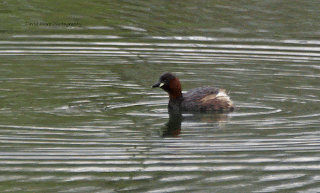On arrival my first sighting was of two posturing Great Created Grebes, performing in front of each other in anticipation of raising a brood of stripy youngsters. Then, with all present and correct on the Main Lake and easily seen from South Hide, were the three Black-Necked Grebes. I have seen this species before but in the autumn when the plumage is much less vibrant. These birds all displayed the golden yellow head feathers, and clearly had the red eye that they are known for. Two of the birds seemed to have paired up, while the other kept well out of the way. The relationship between the paired birds seemed very strong, with both performing synchronised diving and making sharp “peeps” if the other was more than ten yards away.
 |
| A "flotilla" of BNG? |
 |
| Paired up BNG |
 |
| Where have you gone? |
 |
| Back together again - male on the right? |
 |
| Avocets in open formation |
 |
| Coot on incubation duties |
 |
| Resplendant Great Crested Grebe |
 |
| Distant Little Grebe |

No comments:
Post a Comment